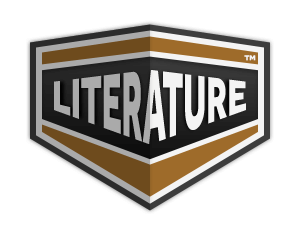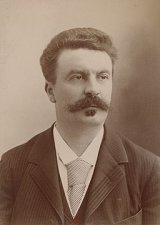The Trip of le Horla Page #4
"The Trip of le Horla" by Guy de Maupassant is a short story that explores themes of existential dread, madness, and the supernatural. Narrated from the perspective of a man grappling with a mysterious and malevolent force, the story delves into the psychological turmoil and eerie experiences that blur the lines between reality and hallucination. Maupassant's signature style captures the protagonist's descent into paranoia, as he confronts the haunting presence of the Horla, a spectral entity that embodies his fears and insecurities. The tale serves as a reflection on the duality of the human psyche and the struggles against unseen influences.
ground, while the balloon struggles madly, like a wounded beast. Peasants run toward us, but they do not dare approach. They were a long time before they decided to come and deliver us, for one cannot set foot on the ground until the bag is almost completely deflated. Then, almost at the same time as the bewildered men, some of whom showed their astonishment by jumping, with the wild gestures of savages, all the cows that were grazing along the coast came toward us, surrounding our balloon with a strange and comical circle of horns, big eyes and blowing nostrils. With the help of the accommodating and hospitable Belgian peasants, we were able in a short time to pack up all our material and carry it to the station at Heyst, where at twenty minutes past eight we took the train for Paris. The descent occurred at three-fifteen in the morning, preceding by only a few seconds the torrent of rain and the blinding lightning of the storm which had been chasing us before it. Thanks to Captain Jovis, of whom I had heard much from my colleague, Paul Ginisty--for both of them had fallen together and voluntarily into the sea opposite Mentone--thanks to this brave man, we were able to see, in a single night, from far up in the sky, the setting of the sun, the rising of the moon and the dawn of day and to go from Paris to the mouth of the Scheldt through the skies. [This story appeared in “Figaro” on July 16, 1887, under the title: “From Paris to Heyst.”]
Translation
Translate and read this book in other languages:
Select another language:
- - Select -
- 简体中文 (Chinese - Simplified)
- 繁體中文 (Chinese - Traditional)
- Español (Spanish)
- Esperanto (Esperanto)
- 日本語 (Japanese)
- Português (Portuguese)
- Deutsch (German)
- العربية (Arabic)
- Français (French)
- Русский (Russian)
- ಕನ್ನಡ (Kannada)
- 한국어 (Korean)
- עברית (Hebrew)
- Gaeilge (Irish)
- Українська (Ukrainian)
- اردو (Urdu)
- Magyar (Hungarian)
- मानक हिन्दी (Hindi)
- Indonesia (Indonesian)
- Italiano (Italian)
- தமிழ் (Tamil)
- Türkçe (Turkish)
- తెలుగు (Telugu)
- ภาษาไทย (Thai)
- Tiếng Việt (Vietnamese)
- Čeština (Czech)
- Polski (Polish)
- Bahasa Indonesia (Indonesian)
- Românește (Romanian)
- Nederlands (Dutch)
- Ελληνικά (Greek)
- Latinum (Latin)
- Svenska (Swedish)
- Dansk (Danish)
- Suomi (Finnish)
- فارسی (Persian)
- ייִדיש (Yiddish)
- հայերեն (Armenian)
- Norsk (Norwegian)
- English (English)
Citation
Use the citation below to add this book to your bibliography:
Style:MLAChicagoAPA
"The Trip of le Horla Books." Literature.com. STANDS4 LLC, 2025. Web. 10 Mar. 2025. <https://www.literature.com/book/the_trip_of_le_horla_4041>.








Discuss this The Trip of le Horla book with the community:
Report Comment
We're doing our best to make sure our content is useful, accurate and safe.
If by any chance you spot an inappropriate comment while navigating through our website please use this form to let us know, and we'll take care of it shortly.
Attachment
You need to be logged in to favorite.
Log In